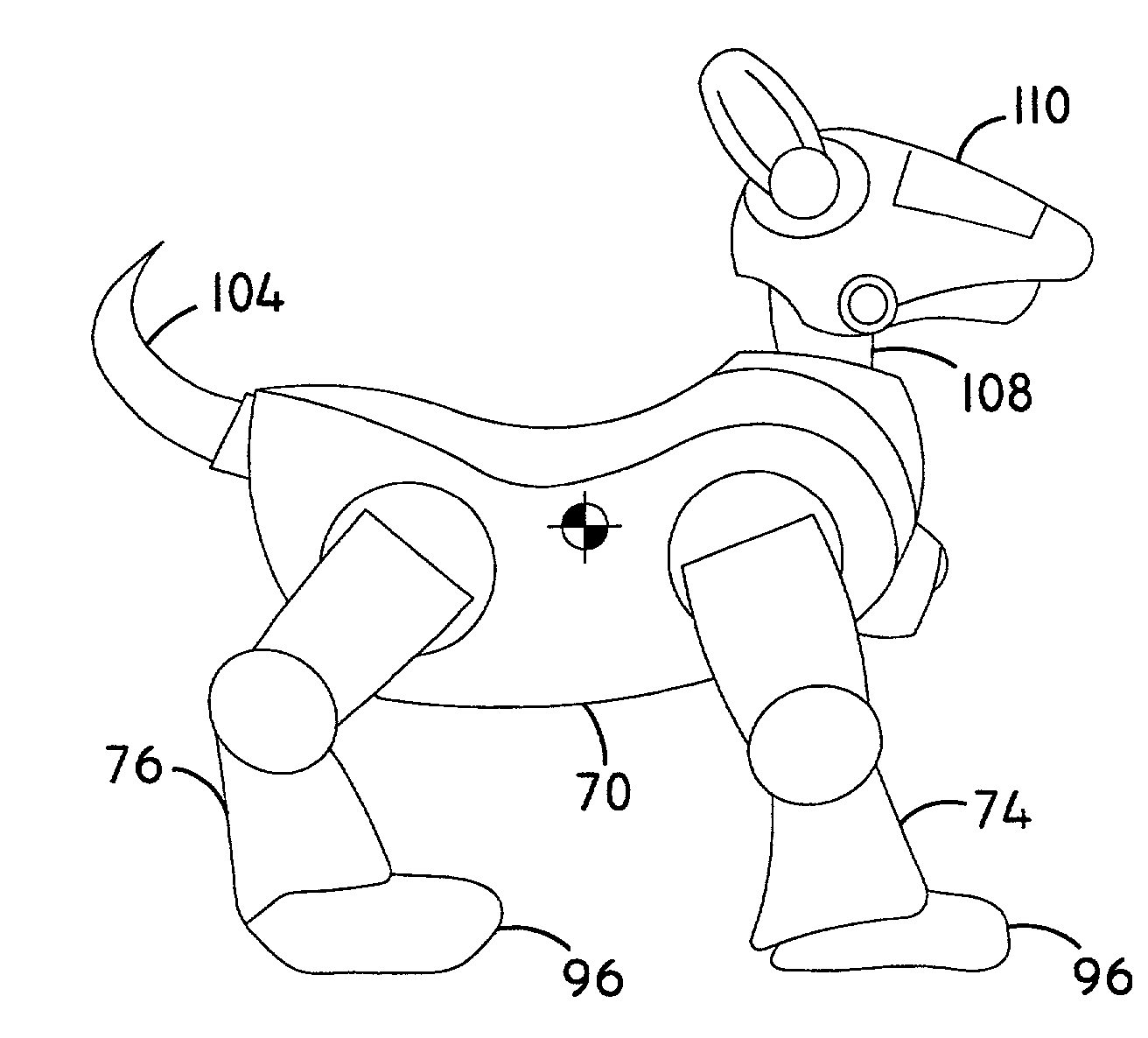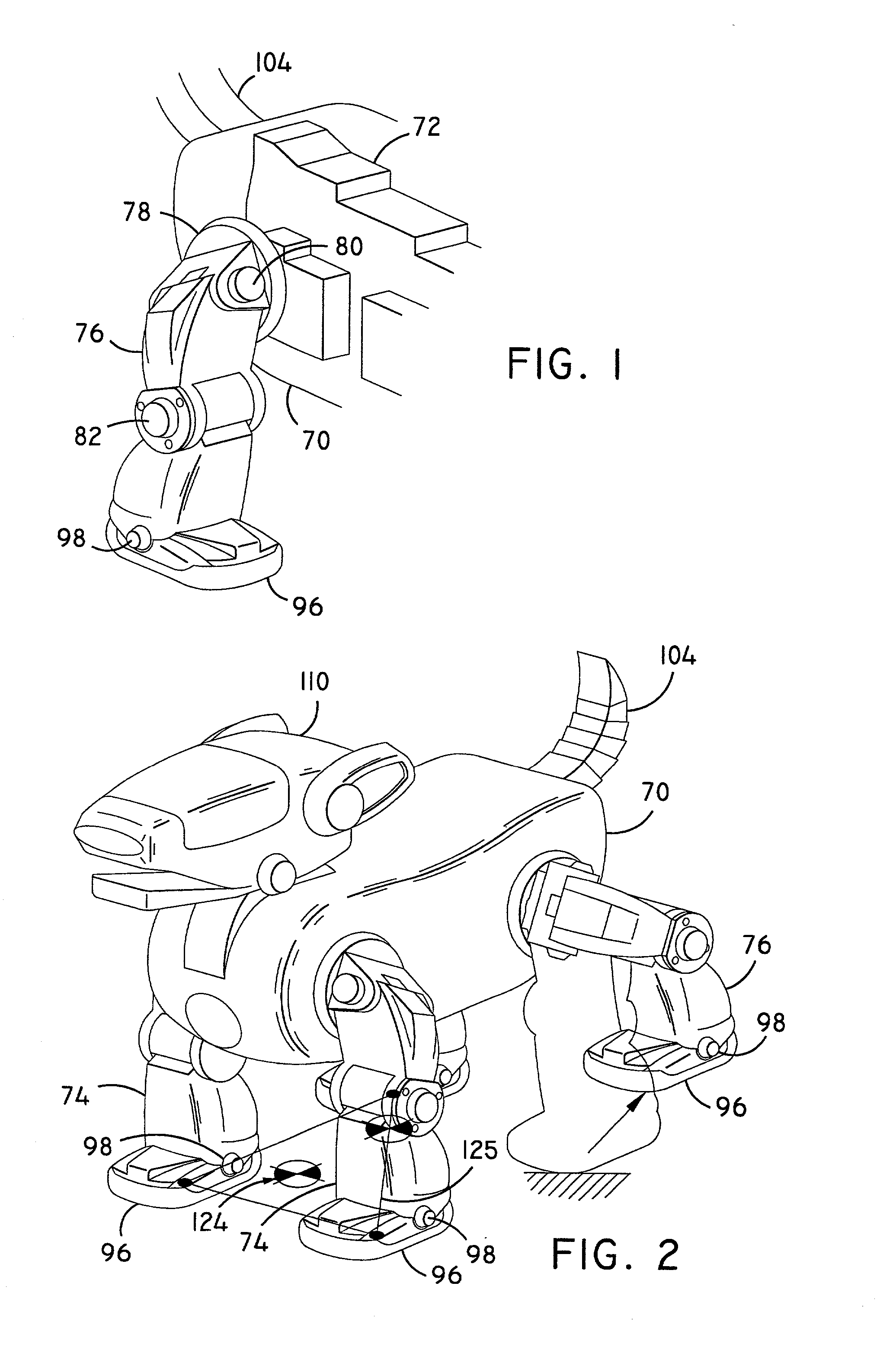Self-stabilizing walking apparatus that is capable of being reprogrammed or puppeteered
a walking apparatus and self-stabilizing technology, applied in the direction of electrical programme control, program control, instruments, etc., can solve the problems of increasing the overall cost of the device, unsatisfactory prior art devices, and insufficient stability of devices
- Summary
- Abstract
- Description
- Claims
- Application Information
AI Technical Summary
Benefits of technology
Problems solved by technology
Method used
Image
Examples
Embodiment Construction
[0072] Referring to FIGS. 1-5 and 7, the preferred embodiment of the present invention is one that is quadrupedal and is fully canine. This embodiment comprises a body shell 70, a frame 72, two front legs 74 that are attached to the frame 72, and two rear legs 76 that are attached to the frame 72 with each leg having three movable joints including a hip joint 78, an upper leg joint 80, and a knee joint 82. Attached to each of these joints is a motor and an encoder such that each leg has a hip motor 84, a hip pot 86, an upper leg motor 88, an upper leg pot 90, a knee motor 92, and a knee pot 94. At the bottom of each leg is attached a foot 96 that forms a fixed right angle joint 98 with the lower leg. In addition, the front two legs 74 have a pair of leg weights 100 attached to them. This apparatus also includes a tail 104 that has a tail motor 106 attached thereto, a neck 108 that is attached to the front portion of the apparatus, and an enlarged head 110 that sits upon the neck 108...
PUM
 Login to View More
Login to View More Abstract
Description
Claims
Application Information
 Login to View More
Login to View More - R&D
- Intellectual Property
- Life Sciences
- Materials
- Tech Scout
- Unparalleled Data Quality
- Higher Quality Content
- 60% Fewer Hallucinations
Browse by: Latest US Patents, China's latest patents, Technical Efficacy Thesaurus, Application Domain, Technology Topic, Popular Technical Reports.
© 2025 PatSnap. All rights reserved.Legal|Privacy policy|Modern Slavery Act Transparency Statement|Sitemap|About US| Contact US: help@patsnap.com



